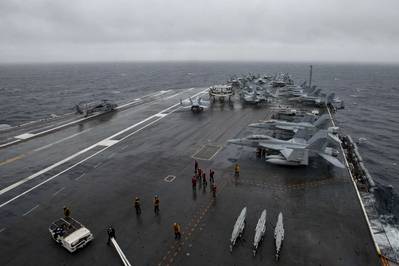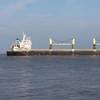The U.S. aircraft carrier USS Dwight D. Eisenhower entered the Mediterranean late on Monday, the U.S. Navy said, at a time when U.S. officials are raising alarm over Russia's maritime expansion.
The Eisenhower, also known as the "Ike," will relieve the USS Harry S. Truman carrier strike group which later this month heads back to the United States after an extended eight-month deployment.
The Eisenhower, which also leads a strike group of cruisers, destroyers and warplanes, is scheduled to continue on to the Gulf to participate in U.S. air strikes on Islamic State targets in Iraq and Syria. Exact details of its deployment have not been released.
Fighter jets based on the Truman have been carrying out air strikes against Islamic State from the Mediterranean since June 3.
The Eisenhower's deployment is part of a rotation of U.S. forces supporting maritime security operations around the globe, the Navy said. Its strike group includes two guided-missile cruisers, four guided-missile destroyers and nine air squadrons.
The Navy said the presence of two carrier strike groups in the Mediterranean showed the U.S. commitment to safety and security, while sending "a strong message of support to our allies and partners in Europe."
The move coincides with NATO military exercises across eastern Europe and Turkey that may raise tensions with Russia.
U.S. officials say Russia is operating warships and submarines in the Mediterranean and plans its own military exercises in coming weeks.
Vice Admiral James Foggo, who heads the U.S. Navy's fleet in the Mediterranean, and naval analyst Alarik Fritz last week said Russia was aggressively expanding its surface and submarine maritime capabilities from the Arctic to the Black Sea.
"Combined with extensive and frequent submarine patrols throughout the North Atlantic and Norwegian Sea, and forward-deployed forces in Syria, Russia has the capability to hold nearly all NATO maritime forces at risk," they wrote in the naval journal Proceedings.
They said it was critical to leverage allied navies to work with NATO partners so they could respond to emergencies and protect maritime infrastructure.
Russia last week said it would respond to a U.S. destroyer's entry into the Black Sea with unspecified measures, saying it and other deployments were designed to ratchet up tensions ahead of a NATO summit in Warsaw next month.
(Reporting by Andrea Shalal; Editing by Richard Balmforth)













